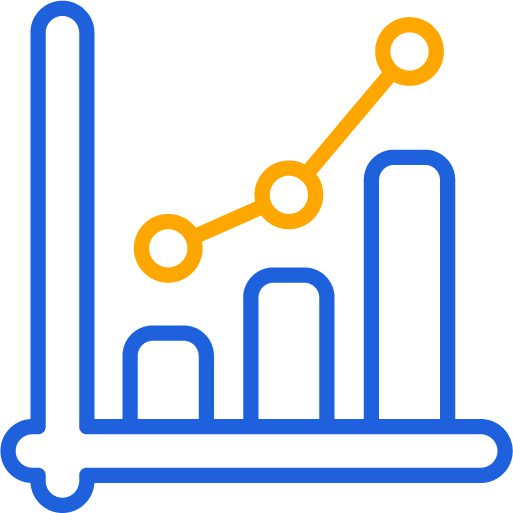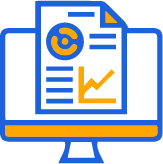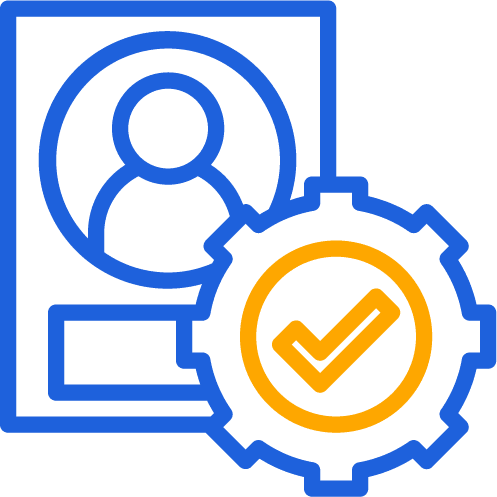Best India Forex Brokers In 2023
Choosing a reputable and well-regulated best forex india broker should be the first step for every trader interested in the foreign exchange market. For the purpose of compiling this guide for India-based best forex brokers, the CompareBroker team has spent a significant amount of time doing in-depth research and data collecting on foreign forex brokers as well as the local regulatory environment. Continue reading to find out which forex broker is the most suitable for your requirements.
It is believed that there are about 1.35 billion people living in India, making it the second most populated nation in the world. The Indian Rupee, sometimes known as INR after its abbreviation, is the country’s official currency. The Reserve Bank of India, sometimes abbreviated as RBI, is the name of India’s national bank. The Reserve Bank of India is charged with a number of primary responsibilities, the most important of which are the formulation and administration of the Indian monetary policy, the maintenance of India’s financial stability both internally and externally, the role of banker to the Government of India, and the role of agent of the Central Government in advising and exercising control over other State-owned commercial banks. There are a number of institutions in India that are devoted to the regulation of the country’s financial markets in addition to the RBI. The Securities and Exchange Board of India (SEBI) and the Insurance Regulatory and Development Authority (IRDA) are two examples of these regulatory bodies. The Securities and Exchange Board of India (SEBI) is in charge of regulating the Indian securities market and safeguarding the interests of investors. Investor protection, the prevention of insider trading, and the regulation of activities in the stock market are the primary goals of this organisation. On the other side, the IRDA is responsible for regulating as well as promoting the insurance and reinsurance industries in India. It is the organization’s duty to look out for the best interests of policyholders, as well as those of artists and the general public.
Best India Brokers
We compiled a comprehensive database of best India Forex Brokers who are registered with the India Securities and Investments Commission, and then we rated them by Overall. The best India forex brokers are listed below.
Pepperstone – best India Brokerage
ThinkMarkets – 3rd Best India Brokerage
MultiBankGroup– 5th Best India brokerage
What are the best forex brokers in India in 2023?

Pepperstone stands out as a noteworthy forex brokerage for Indian traders due to its exceptional combination of features, transparency, and reliability. Renowned for its commitment to providing traders with a seamless and secure trading experience, Pepperstone offers several key advantages. First and foremost, the broker is regulated by globally respected authorities, instilling confidence in Indian traders regarding their funds’ safety and fair trading practices.
Pepperstone’s competitive spreads and lightning-fast execution contribute to its appeal, allowing traders to access the forex market with optimal efficiency. The broker’s user-friendly trading platforms, including the popular MetaTrader 4 and MetaTrader 5, empower Indian traders with advanced tools for technical analysis and seamless trade execution.
Moreover, Pepperstone’s customer-centric approach is evident through its responsive customer support, available 24/5. This support ensures that Indian traders receive timely assistance and answers to their queries, enhancing the overall trading experience.
Whether for novice or experienced traders, Pepperstone’s comprehensive educational resources and market insights provide valuable knowledge to navigate the complexities of forex trading effectively. With its global reputation, strong regulatory framework, and trader-focused features, Pepperstone emerges as a prime choice for Indian forex traders seeking a trustworthy and feature-rich brokerage platform.
You can read the full detail reviews of more than 10,000 words here
AvaTrade has grown into a significant online trading platform since its inception in 2006, with about 200,000 registered clients executing up to 2 million deals each month totaling over $60 billion in trading volume. AvaTrade is regulated by the Central Bank of Ireland, ASIC, IIROC, FSA, FSB, UAE, and the British Virgin Islands, every new customer must pass a few simple compliance tests to verify that you understand the risks of trading and are permitted to trade.
AvaTrade is one of the few brokers who offers both the MetaTrader 4 and MetaTrader 5 platforms. AvaTrade allows the user to perform a 0.01 Lot trade.
Trading Features:
- Allows for scalping
- Allows for hedging
- Minimum deposit is low.
Accounts offered:
- Mini account
- Standard account
- Islamic accountDemo account
- Micro account
Funding methods:
- Skrill
- Payoneer
- PayPal
- NetellerCredit cards
- Bank Transfer
You can read full reviews about AvaTrade here
ThinkMarkets stands out as one of the premier choices for forex trading in India due to its exceptional combination of features and services. With a strong commitment to regulatory compliance and a reputation for transparency, ThinkMarkets provides Indian traders with a secure and trustworthy trading environment. The broker offers a wide range of currency pairs, competitive spreads, and user-friendly trading platforms that cater to both novice and experienced traders. ThinkMarkets’ dedication to client education through webinars, tutorials, and market analysis equips Indian traders with the knowledge needed to make informed decisions. Furthermore, its responsive customer support ensures that traders receive prompt assistance whenever needed. As a comprehensive forex brokerage, ThinkMarkets not only provides access to global markets but also prioritizes the specific needs of Indian traders, making it a compelling choice for those seeking a reliable and feature-rich trading experience.
Trading Features:
- Offers STP
- Low min deposit
Accounts offered:
- Demo account
- Zero account
- Standard account
- Islamic account
Funding methods:
- Credit cards
- Bank Transfer
- Skrill
- Neteller
You can read the full review here
Axi, which has its headquarters in Australia and was established in 2007, has grown to become one of the most best Forex brokers in the world since then. It has done this by using some of the most renowned trading platforms in the globe. These platforms provide traders access to the most latest market data on forex, CFDs, and indices, which in turn enables them to trade at rates that are continuously competitive.
Traders have access to a wide range of products from which to pick, including contracts for difference (CFDs) based on underlying financial assets such as stock indexes, metals, foreign currencies, and commodities. Axi’s web-based trading platform is also available in a number of other languages for users’ convenience.
Axi also offers mobile trading, which ensures connection across all of the most important platforms and devices, and has servers located in New York, close to the exchange, to facilitate the execution of transactions more quickly. Additionally, it offers Expert Advisors for automated trading, as well as the choice to trade with either Standard or Pro accounts, regardless of whether the scenario is simulated or real.
- Allows hedging
- Offers STP
- Allows scalping
- Free VPS (For clients who trade 20 lots per month)
- Low minimum deposit
Accounts offered:
- Micro account
- Mini account
- Standard account
- Zero spread account
- VIP Account (Axi Elite)
- Demo account
- ECN account
- Islamic account
Funding methods:
- Bank Transfer
- Skrill
- Payoneer
- Credit cards
- Neteller
- Crypto (For clients based outside of Europe)
You can read the full review here
The MultiBank Exchange Group is a one of the best India trading broker that offers services related to foreign exchange trading. Traders have access to a diverse selection of goods in a number of different marketplaces. These items include indices, shares, commodities, and currencies. It is needed that a minimum deposit of fifty dollars be made in order to open a live account, and it is regulated by ASIC, FSC, BaFin, CNMV, and FMA. On the other hand, MultiBank Group gives you access to a no-cost trial account so that you can get a feel for their system and try out different features in a risk-free environment. When compared to the average EUR/USD spread of 0.70 pips, the minimal EUR/USD spread offered by MultiBank Group, India brokerage company, is considered to be typical at 0.8 pips.
At MultiBank Group, you have the opportunity to trade over 20,000 distinct products, among which are more than 55 currency pairings. One of the few India forex brokers that offers both the MetaTrader 4 and MetaTrader 5 trading platforms, Multibank Group is one of such brokers. Check out our MT4 vs MT5 comparison to learn more about the differences between the two platforms. In addition to this, MultiBank Group provides access to their own technology, known as Pure ECN Pro. Traders may do business on their choice of device owing to downloadable applications available for both Mac and Windows operating systems.
You can read the full review here
India Forex Brokers Comparison
Compare India forex and CFDs or make a side-by-side comparison of different forex and CFDs brokers in India by using either the forex broker comparison tool or the summary table that is provided below. This broker list is arranged according to the overall rating that each company has on CompareBroker.io
Comparing Trading Cost of India forex brokers

Comparing Trading platform between India forex brokers

Comparing investment opportunities between India forex broker
We keep a careful eye on the availability of various financial products, including but not limited to social copy trading, forex trading (both CFD and spot), stock trading (both CFD and non-CFD), spread betting, exchange-traded funds (ETFs), and more. Within our comprehensive and impartial database, these different forms of investments are monitored as variables in their own right. Investigate the types of investments that are available at the best forex brokers in India.


Frequently Asked Questions
How to trade forex
Trading forex in India involves navigating the intricacies of the financial markets within the regulatory framework of the country. To begin forex trading, you’ll need to select a regulated and reputable forex broker that caters to Indian traders. Once you’ve chosen a broker, open a trading account by providing the necessary documents for verification. Many brokers offer demo accounts, allowing you to practice trading with virtual funds and refine your strategies before trading with real money.
Educate yourself about forex trading fundamentals, including currency pairs, pips, lots, and leverage. Utilize both technical and fundamental analysis to make informed trading decisions, studying price charts, patterns, indicators, and staying updated on global economic events that impact currency markets.
Risk management is crucial; never invest more than you can afford to lose on a single trade. Utilize risk management tools like stop-loss and take-profit orders to protect your capital. As you gain experience, gradually increase your position sizes while maintaining prudent risk management practices.
Be mindful of the legal and regulatory aspects of forex trading in India. The Reserve Bank of India (RBI) and the Securities and Exchange Board of India (SEBI) regulate forex trading in the country. Familiarize yourself with the guidelines and consult with financial professionals to ensure compliance with local regulations.
In conclusion, forex trading in India offers opportunities to participate in the global markets and potentially generate profits. By choosing a reliable broker, educating yourself, practicing disciplined trading, and adhering to regulatory requirements, you can embark on a rewarding journey of forex trading in India.
How to trade forex for beginners
Trading forex as a beginner can be both exciting and challenging. Here’s a step-by-step guide to help you get started with forex trading:
Education and Research:
- Begin by learning the basics of forex trading. Understand key concepts such as currency pairs, pips, lots, leverage, and order types.
- Explore different trading strategies and decide which ones align with your trading goals and risk tolerance.
- Study technical analysis (chart patterns, indicators) and fundamental analysis (economic indicators, news events) to make informed trading decisions.
Choose a Reliable Broker:
- Select a reputable and regulated forex broker. Look for features like user-friendly trading platforms, competitive spreads, good customer support, and educational resources.
- Open a demo account with your chosen broker to practice trading without risking real money.
Develop a Trading Plan:
- Create a well-defined trading plan that outlines your goals, risk tolerance, preferred trading style, and strategy.
- Determine your entry and exit criteria, position sizing, risk-reward ratio, and how you’ll manage trades.
Practice on a Demo Account:
- Use the demo account to practice executing trades and implementing your trading plan.
- Gain experience and build confidence in your trading skills without risking real capital.
Understand Risk Management:
- Never risk more than you can afford to lose on a single trade.
- Use risk management tools like stop-loss orders to limit potential losses.
- Consider your risk per trade as a percentage of your total trading capital.
Start Trading with a Small Account:
- Once you’re comfortable with your demo trading, open a live trading account with a small amount of capital that you can afford to lose.
- Start with smaller position sizes to manage risk as you gain experience.
Monitor the Markets:
- Keep an eye on currency pairs that interest you. Analyze charts, identify trends, and look for potential trading opportunities.
Practice Patience and Discipline:
- Stick to your trading plan and avoid making impulsive decisions based on emotions.
- Be patient and wait for setups that align with your strategy.
Start Simple and Gradually Expand:
- Begin with a single currency pair and master your strategy before diversifying.
- As you gain experience, you can explore more currency pairs and trading strategies.
Keep Learning and Adapting:
- Forex trading is a continuous learning process. Stay updated on market developments, refine your trading strategy, and adapt to changing market conditions.
Keep Records:
- Maintain a trading journal to record your trades, reasons for entry and exit, and lessons learned. This will help you track your progress and improve over time.
Seek Knowledge and Mentorship:
- Read books, watch educational videos, and consider joining trading communities to learn from experienced traders.
- Consider seeking advice from professionals or mentors who can provide valuable insights.
How to trade forex in India
Trading forex in India involves several steps within the regulatory framework set by the Reserve Bank of India (RBI) and other relevant authorities. Here’s a concise guide on how to trade forex in India:
Choose a Regulated Broker: Select a forex broker that is regulated by the relevant authorities in India, such as the Reserve Bank of India (RBI) and the Securities and Exchange Board of India (SEBI). Ensure the broker offers a user-friendly trading platform, suitable leverage, and provides access to a range of currency pairs.
Open a Trading Account: Sign up for a trading account with the chosen broker. Provide the required documentation for verification, which may include proof of identity, address, and income.
Educate Yourself: Learn about forex trading fundamentals, including currency pairs, pips, lots, and leverage. Study both technical analysis (price charts, indicators) and fundamental analysis (economic news, events) to make informed trading decisions.
Practice on a Demo Account: Many brokers offer demo accounts. Use this to practice trading with virtual money and hone your trading skills without risking real capital.
Develop a Trading Plan: Create a well-defined trading plan that outlines your goals, risk tolerance, and trading strategy. This plan should also include risk management techniques, such as setting stop-loss and take-profit levels.
Fund Your Account: Once you’re comfortable with demo trading, fund your live trading account using approved methods, which may include bank transfers, credit cards, or digital wallets.
Start Trading: Use your trading platform to execute trades based on your analysis and strategy. Monitor the markets closely, and make informed decisions.
Implement Risk Management: Use proper risk management techniques to protect your capital. Avoid overleveraging and risking more than a small percentage of your trading capital on a single trade.
Stay Informed: Keep track of global economic events and news that could impact currency markets. Economic calendars and financial news sources are valuable tools.
Comply with Regulations: Adhere to the regulations set by the RBI and other relevant authorities. Ensure you are aware of any legal and tax implications of forex trading in India.
Continuous Learning: Forex markets evolve, so continue learning and refining your trading skills. Attend webinars, read trading books, and stay updated on industry trends.
Keep Records: Maintain a trading journal to track your trades, decisions, and outcomes. This helps you analyze your performance and improve your strategies over time.
Remember that forex trading involves risk, and it’s possible to lose more than your initial investment. Approach trading with caution, education, and discipline, and consider seeking guidance from financial professionals to navigate the regulatory and legal aspects of forex trading in India.
How to trade forex with leverage
Trading forex with leverage involves borrowing funds from your broker to control a larger position size than your available capital. Leverage can amplify both potential profits and losses. Here’s a step-by-step guide on how to trade forex with leverage:
Choose a Regulated Broker: Select a reputable forex broker that offers leveraged trading. Ensure the broker is regulated by a recognized financial authority to ensure a secure trading environment.
Understand Leverage Ratios: Different brokers offer varying leverage ratios. Common ratios include 1:50, 1:100, or higher. A leverage ratio of 1:100, for instance, allows you to control a position worth $100,000 with just $1,000 of your own capital.
Open a Trading Account: Sign up for a trading account with the chosen broker. Provide the required documentation for verification, including proof of identity and address.
Fund Your Account: Deposit funds into your trading account. The amount required for leverage depends on the broker and the leverage ratio you choose.
Calculate Position Size: Determine the position size you want to trade based on the leverage ratio. For example, with $1,000 and 1:100 leverage, you could control a position worth $100,000.
Manage Risk: Leverage magnifies risk, so implement proper risk management. Set stop-loss orders to limit potential losses, and avoid risking more than a small percentage of your trading capital on a single trade.
Execute Trades: Use your trading platform to enter positions. Leverage is automatically applied to your trades, allowing you to control a larger position with your available capital.
Monitor the Markets: Keep a close watch on market movements. Leverage can amplify both gains and losses, so stay informed and adjust your trading strategy accordingly.
Close Positions: As your trades move in your favor, you can close them to secure profits. If a trade goes against you, decide when to cut your losses.
Review and Learn: Regularly analyze your trading performance, considering both winning and losing trades. Adjust your approach based on your analysis.
Comply with Regulations: Ensure you are trading within the regulatory framework of your country. Understand the legal and tax implications of trading with leverage.
Continuous Learning: Keep learning about the forex market and trading strategies. Leverage requires a strong understanding of risk management and market dynamics.
Trading with leverage can be both rewarding and risky. While it has the potential to magnify gains, it can also lead to substantial losses. Therefore, it’s crucial to educate yourself, practice on a demo account, and use leverage prudently as part of a well-defined trading strategy.
How to trade forex with ai
Trading forex with AI (Artificial Intelligence) involves using advanced algorithms and technology to analyze market data, identify patterns, and execute trades automatically. To trade forex with AI, you’ll need to follow these steps:
Select an AI-Based Platform: Choose a reputable AI-powered trading platform or software that offers automated trading capabilities. These platforms often utilize machine learning and data analysis to make informed trading decisions.
Connect to Data Sources: Integrate the AI software with real-time market data sources to gather information on currency pairs, economic indicators, news, and other relevant factors.
Customize Strategies: Depending on the platform, you may be able to customize trading strategies based on your risk tolerance, preferred trading style, and market outlook. AI algorithms can adapt and learn from historical data to optimize trading strategies.
Backtesting and Optimization: Before deploying AI for live trading, conduct thorough backtesting to assess the performance of your chosen strategies using historical data. Optimize the algorithms for better results.
Risk Management: Implement risk management parameters, including stop-loss and take-profit levels, to control potential losses and secure profits.
Monitor and Adjust: While AI can automate trading, it’s important to regularly monitor its performance and make adjustments as needed. Market conditions can change, and AI may need to adapt.
Stay Informed: Even with AI, staying informed about global economic events and news is essential. Sudden market shifts or unexpected events can impact AI-driven trades.
Continuous Learning: Stay updated on advancements in AI technology and trading strategies. The field of AI in trading is evolving rapidly, and continuous learning is key to leveraging its potential effectively.
Trading with AI offers the advantage of processing large amounts of data quickly and executing trades without human emotions. However, it’s important to note that AI trading is not foolproof and can also involve risks. Successful integration of AI into your forex trading requires a solid understanding of both AI technology and forex markets. It’s advisable to start with a demo account and gradually transition to live trading as you gain confidence in the AI system’s capabilities.
How to trade forex news
Trading forex news involves capitalizing on significant market movements triggered by the release of economic indicators, geopolitical events, and other news releases. To effectively trade forex news, traders must stay well-informed about upcoming events through economic calendars and news sources. The key lies in anticipating market reactions based on the divergence between the actual data and market expectations. Rapid execution of trades immediately after the news release is crucial, as volatility can lead to swift price movements. It’s essential to employ risk management tools like stop-loss orders to mitigate potential losses, given the unpredictable nature of news-driven market movements. Trading forex news demands a deep understanding of market dynamics, swift decision-making, and the ability to interpret and analyze data in real-time, making it a strategy favored by experienced traders.
Can I trade with forex with $100
Yes, you can start trading forex with as little as $100. Many brokers offer micro or mini accounts that allow you to trade with a small initial deposit. These accounts provide an opportunity for beginners to get a feel for real trading while managing their risk. With a $100 investment, you can take advantage of leverage provided by your broker, which allows you to control a larger position size than your initial capital.
However, it’s important to approach trading with caution and a realistic mindset. While starting with a small amount is possible, trading with a limited capital requires careful risk management and a focus on preserving your funds. You should be prepared for the potential of both gains and losses, and it’s advisable to start with smaller position sizes and gradually increase as you gain experience and confidence.
Remember that successful forex trading involves continuous learning, practice, and discipline. It’s recommended to first practice on a demo account to familiarize yourself with the platform and your trading strategy before transitioning to live trading with real money.
Best India Forex Brokers
The best forex brokers in India charge a variety of commissions, which we have outlined in the table below.


























